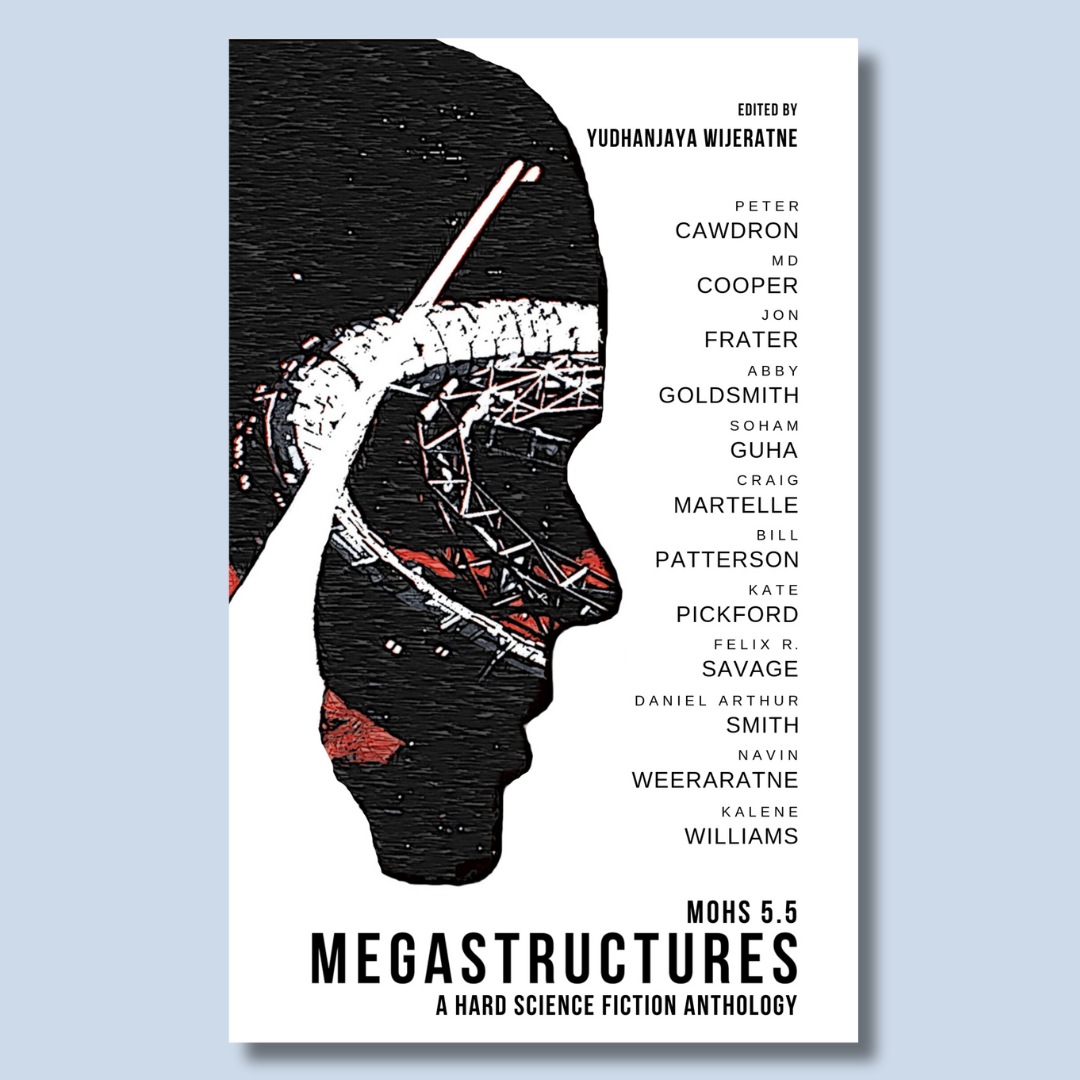
The Inhuman Race
A biopunk Colombo from an alternate future. Colonialism. A machine uprising. And the consequences.
A curated collection of global science fiction stories centered around megastructures and massive feats of engineering.
“Few artists thrive in solitude and nothing is more stimulating than the conflict of minds with similar interests,” wrote the celebrated science fiction writer Arthur C. Clarke.
In these pages, a spectacular collection of science fiction authors - newcomers and veterans, bestsellers and debuts—clash thusly over one of Clarke’s most famous motifs: extreme feats of engineering.
MOHS 5.5 stands for scientific rigor. A spectacular collection of science fiction authors, newcomers and veterans, bestsellers and debuts, will entertain you. Curated by Yudhanjaya Wijeratne, Mohs 5.5: Megastructures echoes a journey through hard science fiction that inspires, entertains, and, quite possibly, explores. From Sri Lanka, India, Australia, and North America come five-minutes-into-the-future efforts to detect alien life, great colonies in the void, homophobia in space, and a one-man army being endlessly 3D-printed and sent out to do battle among the stars.
Megastructures has been selected for archival on the Moon via the Lunar Codex, a significant honor that places this anthology among works preserved for future generations beyond Earth. I can think of few higher accolades than to be preserved forever in the void . . .
Megastructures is the first anthology I curated end to end, from story editing to cover art. It is, in part, an homage to the work of Arthur C. Clarke, who lived in Sri Lanka and influenced much of science fiction for decades to come - and cast a very large shadow here. The idea was to chase the feeling I first had when I encountered Rama - this sense of an immense superstructure, a feat of engineering right up there with the Great Wall.
It was also an attempt to get together writers who really enjoyed the engineering of things. I went back over discussions of the “hardness” of science fiction and of diamonds and picked Mohs 5.5 as an appropriate degree - “One Big Lie”, so to speak, and no Ringworlds, because everybody wanted to do Ringworlds.
It succeeded on both those things, and it taught me first-hand that enforcing scientific “accuracy” is quest for lunatics and saints. I am neither. Fortunately, we were blessed with a bunch of people really willing to put up with some merciless edits. Bill Patterson, who did a great deal of review work on the science of the stories, launched a sequel anthology - MARS (Mohs 5.5).
The foreword charts the anthology’s inspirations; it exists as a note here.
